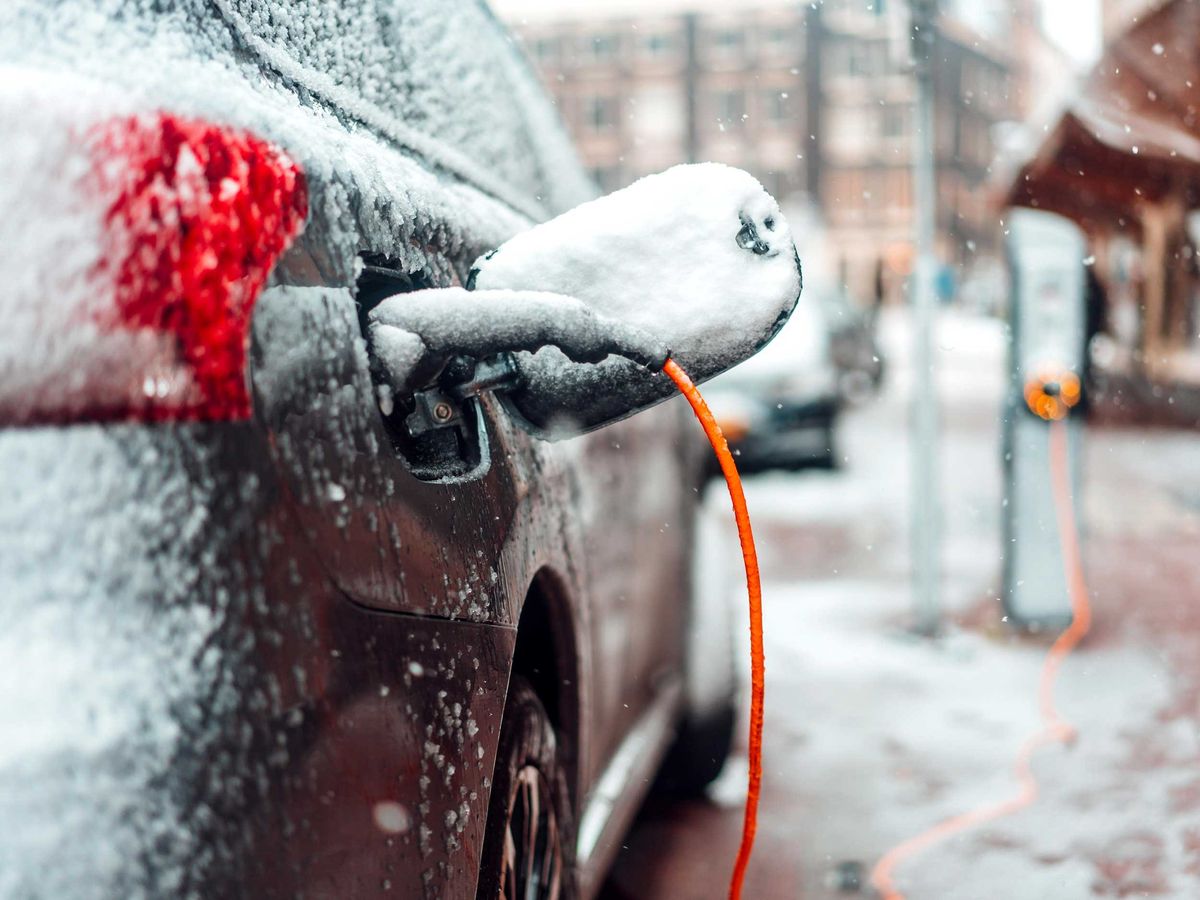The increasing energy density of lithium-ion batteries over the years has led to electric vehicles with longer driving range. But that driving range plummets in tandem with the temperatures in winter. This drop in battery performance is one reason customers often cite for not wanting to purchase an EV.
By redesigning the battery electrolyte, researchers have now made a battery that works at temperatures down to -20 °C. Compared to other cold-weather batteries that researchers have reported so far, this one has a record-breaking lifetime of over a year.
Today’s batteries work well at temperatures between 0 °C and 40 °C. For more widespread deployment, developers are striving to make batteries that work over a wider range of temperatures, from -40 °C to 60 °C. “The high energy density and long lifespan of lithium-ion batteries at low temperatures are key to the development of all-climate electric vehicles,” says Chong Yan of the Beijing Institute of Technology.
Bulked-Up Batteries Drag Down EV Range in the Cold
To keep batteries working in the cold today, manufacturers add external insulation and heat. But this also adds bulk, and hauling that additional weight brings down driving range. Plus, it’s not ideal for cold-weather batteries for weight-sensitive applications, such as high-altitude drones and satellites.
Many researchers are attempting to improve battery performance at low temperatures by focusing on the electrolytes that shuttle lithium ions between battery electrodes. Frigid temperatures thicken these electrolytes, so the ions move slower, leading to capacity loss and slow charging. Some teams have recently used low-temperature solvents to make electrolytes or tested chemical additives in the electrolytes that help improve their cold tolerance. Others have formulated completely new electrolytes that can handle a broad range of temperatures.
Yan, along with Qiang Zhang of Tsinghua University and their colleagues, focused on the low-temperature solvent approach. While such solvents help cold-weather performance, they are known to produce gases at high temperatures that reduce battery life. “Yet the gas-generation mechanism and corresponding inhibition strategy remain unknown,” Yan says.
In their paper published in the journal Matter, the researchers now unveil the mechanism behind that gas generation, and propose a new high-concentration electrolyte they have designed as a workaround to the issue.
They found that lithium plating—the accumulation of lithium metal on the surface of the battery’s graphite anode—is the culprit behind gas generation. In winter temperatures, because lithium ions move slowly, they tend to get crowded as they enter from the electrolyte into the graphite, so some lithium metal eventually gets built up on the surface. The researchers found that the commonly used low-temperature solvent ethyl acetate reacts violently with this plated lithium, resulting in the formation of hydrogen and ethane gases. The pressure from the gas buildup eventually cracks the electrodes and makes the battery fail.
Cold Weather Approach Uses New Electrolyte
To combat this gas generation, the researchers made an electrolyte by dissolving a larger than usual amount of lithium salts in a solvent made of 90 percent ethyl acetate and 10 percent fluoroethylene carbonate.
The researchers then made a battery cell with this electrolyte, a graphite anode and an NMC811 cathode, which is made of 80 percent nickel, 10 percent cobalt, and 10 percent manganese. NMC811 cathodes are used in today’s high-performance lithium-ion batteries because of their high energy density and minimal use of expensive cobalt.
“All the materials we use are commercially available and the proposed electrolyte is reasonable to make on a large scale,” Yan says, making the new approach easily applicable to today’s common battery chemistries and manufacturing processes.
The researchers show that using ethyl acetate as the main solvent keeps the battery cell operating at temperatures down to -40 °C. The lithium salt reacts with the fluoroethylene carbonate, meanwhile, to form a solid layer on the anode that conducts lithium ions but also protects any metallic lithium that inevitably plates the surface. The protective layer keeps the plated lithium from reacting with the ethyl acetate and forming gases.
In tests, the cells retained more than three-quarters of their room-temperature capacity at -40 °C. And they could be charged for over 1,400 cycles, which is the average number of charging cycles a battery goes through over a year.
There are still bottlenecks to overcome, though, Yan says. The electrolyte has a relatively high cost compared to conventional ones, and the battery does not work efficiently at temperatures below -50 °C. So the team now plans to “further optimize the concentration of lithium salt and the type of solvent, striving to reduce the cost of the electrolyte” as well as improving the lower temperature performance.
Prachi Patel is a freelance journalist based in Pittsburgh. She writes about energy, biotechnology, materials science, nanotechnology, and computing.



